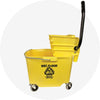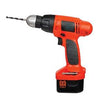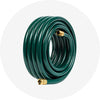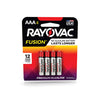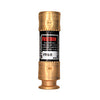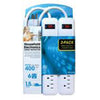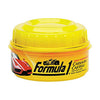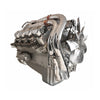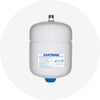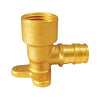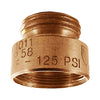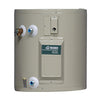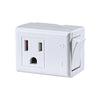What Lawn Fertilizer Should I Use in My Garden?
∙ min read
Growing a beautiful, green, and lush lawn requires more than just basic mowing and watering. Grass needs food to grow, and that food comes in the form of fertilizer. You may have noticed your neighbor's green expanse of lawn and wondered why yours doesn't look the same since you live in the same climate. Chances are your neighbor uses lawn fertilizer multiple times a year for good garden care, providing his or her grass with the specific nutrients, it needs to look magazine-worthy.

Even if you're new to the world of lawn and garden, you can get good results with a green lawn care routine. All it takes is the right products and the right timing to enjoy grass that's free from weeds and grows thick and healthy.
What Is Lawn Fertilizer?
Three essential nutrients make up all varieties of lawn fertilizer: nitrogen (N), phosphorus (P), and potassium (K). Even plant food has these ingredients, though in different quantities than fertilizer for grass. Each of the nutrients benefits your lawn in different ways:
-
Nitrogen helps green up your lawn and gets it growing quickly.
-
Phosphorus encourages healthy roots.
-
Potassium helps your lawn resist diseases, tolerate cold, and withstand drought.
When picking lawn fertilizers, you'll want to look at the NPK number to determine if it's what you need. For example, a fertilizer for new grass will have a high phosphorus number to give the root system a head start, while an option for established grass will have a lower amount.

Why Is Fertilizing Necessary?
Every type of grass, from Kentucky blue to Bermuda, benefits from feeding. After a long winter of dormancy, your lawn is waking up and getting ready to grow again. It needs the nutrients mentioned above to do so.
Without fertilizer, it will take longer for your lawn to green up and take off. As summer temperatures arrive, your grass will benefit from the spring application, drawing from its reserves to get through the drought, increased foot traffic, pests, and disease.

Which Type of Fertilizer Is Right for You?
Choosing the correct type of fertilizer for grass will depend on where you live, the type of grass you have, and your goals. For example, those who live in the northern U.S. have lawns that go dormant in the winter: this means that fertilization is necessary once the grass starts growing again. Southern U.S. homeowners usually have lawns that grow year-round, so an early application of fertilizer rejuvenates the grass and keeps it looking good.
There are a few different types of grass fertilizers to choose from, including:
-
Time-release fertilizer feeds the lawn over several months, reducing the need for repeat applications.
-
Gradual-release fertilizer gives the grass a chance to slowly absorb needed nutrients without burning the lawn.
-
Granular fertilizer can come in either time-release or gradual-release forms, but it is the most user-friendly and easy to spread.
-
Liquid fertilizer is applied using a hose and quickly delivers nutrients to the lawn without the need for watering afterward, unlike granular.
-
Organic fertilizers are made from natural products, typically from living organisms or their waste.
-
Synthetic fertilizers are formulated from chemicals and can provide fast results.
Suppose you're the type of person who wants to fertilize once in the spring and probably won't remember to do so again until the fall; go for a time-release option. If you're concerned about the chemicals you're using close to your family, choose an organic fertilizer.

When Should You Fertilize?
To get the most out of your lawn and have healthy soil, you'll want to put yourself on a fertilizing schedule that will ensure low weed growth and fast grass growth. That almost always involves an early spring application, typically in mid-April. The first time you put fertilizer down, be sure to use one that includes a preemergent; this helps prevent crabgrass and other weeds from germinating. If you're using granular fertilizer, be sure to apply it before a rainfall; otherwise, you'll need to water with sprinklers to ensure that it gets down into the soil.
While this application is usually enough to green up your lawn and prepare it for the coming hot months, many homeowners swear by a five-application process each year. That means fertilizing again in May, two more times in summer, and one more time in fall, to get your grass ready for winter. This application should take place six weeks before the average frost date in your area.
A healthy lawn can be easily obtained when you stick with a lawn fertilization schedule. Choose a type meant for your particular variety of grass, where you live, and what your lawn needs to grow strong.

Talking with a local extension office can often help you decide which type of fertilizer is best for your area, then you can order from our wide range of lawn fertilizer options.
Shop Your Lawn Fertilizer Today








